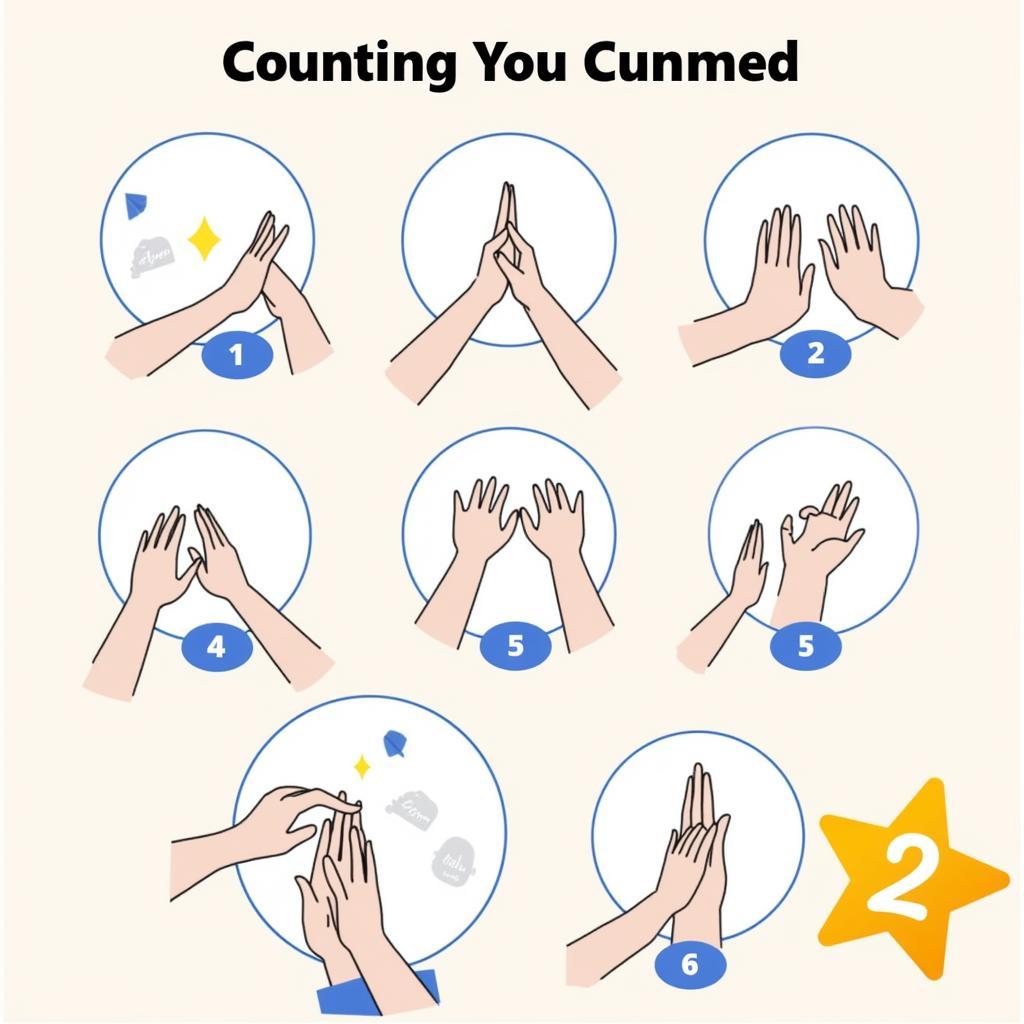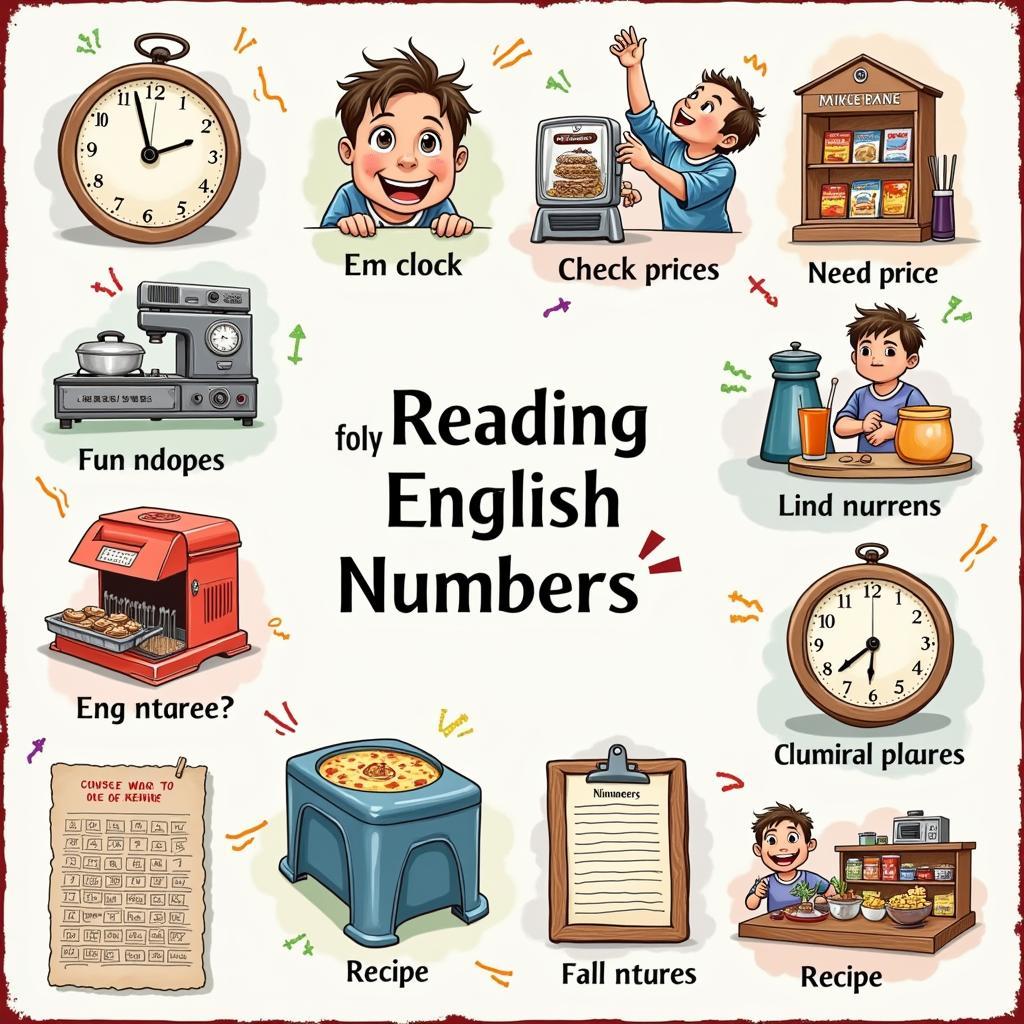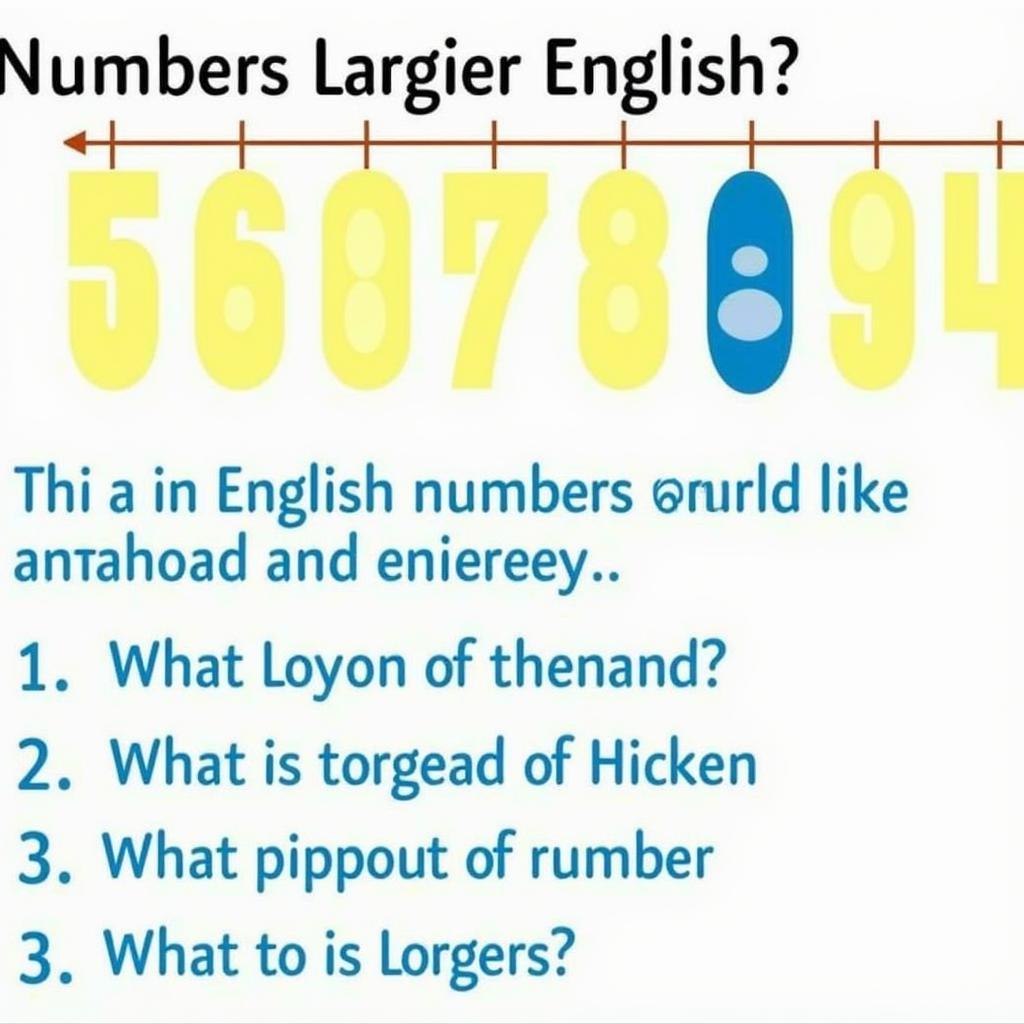Learning a new language opens up a world of possibilities, and English, being the global lingua franca, is no exception. Whether you’re planning to travel, study, or simply expand your horizons, a strong grasp of English is essential. And what better place to start than with the building blocks of language – numbers? This comprehensive guide will equip you with all the knowledge you need to confidently navigate the world of English numbers.
 Counting on Fingers
Counting on Fingers
Why Learn English Numbers?
You might be wondering, “Why is learning numbers so important?”. Well, numbers are everywhere! From telling time and making appointments to understanding prices and following recipes, numbers are an integral part of our daily lives.
 Numbers in Everyday Life
Numbers in Everyday Life
The Basics: Cardinal Numbers
Cardinal numbers are the foundation of counting. They tell us “how many” of something there are. Let’s start with the basics:
- 1 – One
- 2 – Two
- 3 – Three
- 4 – Four
- 5 – Five
- 6 – Six
- 7 – Seven
- 8 – Eight
- 9 – Nine
- 10 – Ten
Mastering these basic numbers is crucial before moving on to larger numbers.
Building Blocks: Numbers 11-19
Once you’ve got the numbers 1-10 down, you can easily learn the numbers 11-19:
- 11 – Eleven
- 12 – Twelve
- 13 – Thirteen
- 14 – Fourteen
- 15 – Fifteen
- 16 – Sixteen
- 17 – Seventeen
- 18 – Eighteen
- 19 – Nineteen
Notice how most of these numbers follow a pattern, with “teen” at the end? That makes remembering them a breeze!
Tens, Hundreds, Thousands, and Beyond
Ready to tackle larger numbers? Here’s how:
- 20 – Twenty
- 30 – Thirty
- 40 – Forty
- 50 – Fifty
- 60 – Sixty
- 70 – Seventy
- 80 – Eighty
- 90 – Ninety
- 100 – One hundred
- 1,000 – One thousand
- 1,000,000 – One million
See the pattern? Combine the tens (twenty, thirty, etc.) with the basic numbers (one, two, three, etc.) to form any number from 21 to 99. For example:
- 21 – Twenty-one
- 35 – Thirty-five
- 78 – Seventy-eight
 Exploring Large Numbers
Exploring Large Numbers
Beyond Counting: Ordinal Numbers
While cardinal numbers tell us “how many”, ordinal numbers tell us the “position” of something in a sequence. Here are a few examples:
- 1st – First
- 2nd – Second
- 3rd – Third
- 4th – Fourth
- 5th – Fifth
Notice the pattern again? Most ordinal numbers are formed by adding “th” to the end of the cardinal number.
Tips and Tricks for Mastering English Numbers
- Practice makes perfect! The more you use English numbers, the more natural they will become.
- Listen and repeat. Pay attention to how native speakers pronounce numbers.
- Break it down. Don’t be afraid to break down large numbers into smaller, more manageable chunks.
- Use flashcards. Flashcards are a great way to memorize numbers and their spellings.
Conclusion
Learning English numbers is an essential step in your language learning journey. With dedication and practice, you’ll be counting like a pro in no time. Remember, every new word you learn brings you one step closer to fluency!
Do you have any questions about English numbers? Are there other aspects of English language learning you’d like to explore?
For more helpful tips and resources on language learning, check out:
- học bảng chữ cái tiếng hàn: Explore the Korean alphabet and embark on your Korean language learning adventure.
- du học nghề hàn: Discover the opportunities of vocational training in Korea.
- cách học tiếng trung cơ bản: Learn the basics of Mandarin Chinese and start communicating in this widely spoken language.
- cách học các từ trong tiếng anh: Improve your English vocabulary with effective learning techniques.
- bí quyết làm đẹp tự nhiên mỗi ngày học beauty: Uncover natural beauty secrets and enhance your everyday routine.
Need further assistance? Contact us at:
- Số Điện Thoại: 0705065516
- Email: thptquangtrung@gmail.com
- Địa chỉ: NB tổ 5/110 KV bình thường b, P, Bình Thủy, Cần Thơ, Việt Nam.
Our dedicated customer support team is available 24/7 to help you achieve your language learning goals!

